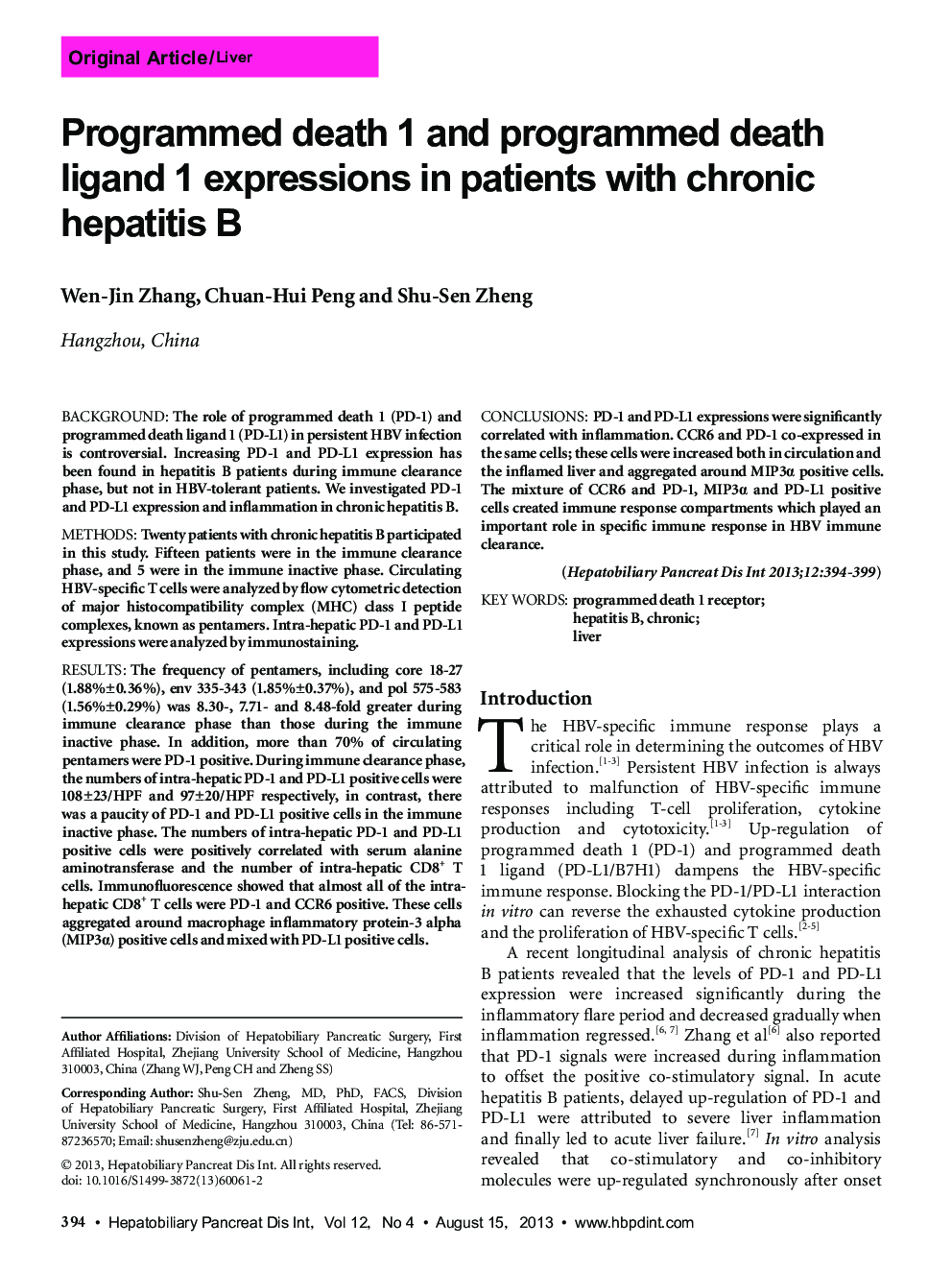| کد مقاله | کد نشریه | سال انتشار | مقاله انگلیسی | نسخه تمام متن |
|---|---|---|---|---|
| 3337194 | 1213788 | 2013 | 6 صفحه PDF | دانلود رایگان |

BackgroundThe role of programmed death 1 (PD-1) and programmed death ligand 1 (PD-L1) in persistent HBV infection is controversial. Increasing PD-1 and PD-L1 expression has been found in hepatitis B patients during immune clearance phase, but not in HBV-tolerant patients. We investigated PD-1 and PD-L1 expression and inflammation in chronic hepatitis B.MethodsTwenty patients with chronic hepatitis B participated in this study. Fifteen patients were in the immune clearance phase, and 5 were in the immune inactive phase. Circulating HBV-specific T cells were analyzed by flow cytometric detection of major histocompatibility complex (MHC) class I peptide complexes, known as pentamers. Intra-hepatic PD-1 and PD-L1 expressions were analyzed by immunostaining.ResultsThe frequency of pentamers, including core 18–27 (1.88%±0.36%), env 335–343 (1.85%±0.37%), and pol 575–583 (1.56%±0.29%) was 8.30-, 7.71- and 8.48-fold greater during immune clearance phase than those during the immune inactive phase. In addition, more than 70% of circulating pentamers were PD-1 positive. During immune clearance phase, the numbers of intra-hepatic PD-1 and PD-L1 positive cells were 108±23/HPF and 97±20/HPF respectively, in contrast, there was a paucity of PD-1 and PD-L1 positive cells in the immune inactive phase. The numbers of intra-hepatic PD-1 and PD-L1 positive cells were positively correlated with serum alanine aminotransferase and the number of intra-hepatic CD8+ T cells. Immunofluorescence showed that almost all of the intrahepatic CD8+ T cells were PD-1 and CCR6 positive. These cells aggregated around macrophage inflammatory protein-3 alpha (MIP3α) positive cells and mixed with PD-L1 positive cells.ConclusionsPD-1 and PD-L1 expressions were significantly correlated with inflammation. CCR6 and PD-1 co-expressed in the same cells; these cells were increased both in circulation and the inflamed liver and aggregated around MIP3α positive cells. The mixture of CCR6 and PD-1, MIP3α and PD-L1 positive cells created immune response compartments which played an important role in specific immune response in HBV immune clearance.
Journal: Hepatobiliary & Pancreatic Diseases International - Volume 12, Issue 4, 15 August 2013, Pages 394-399